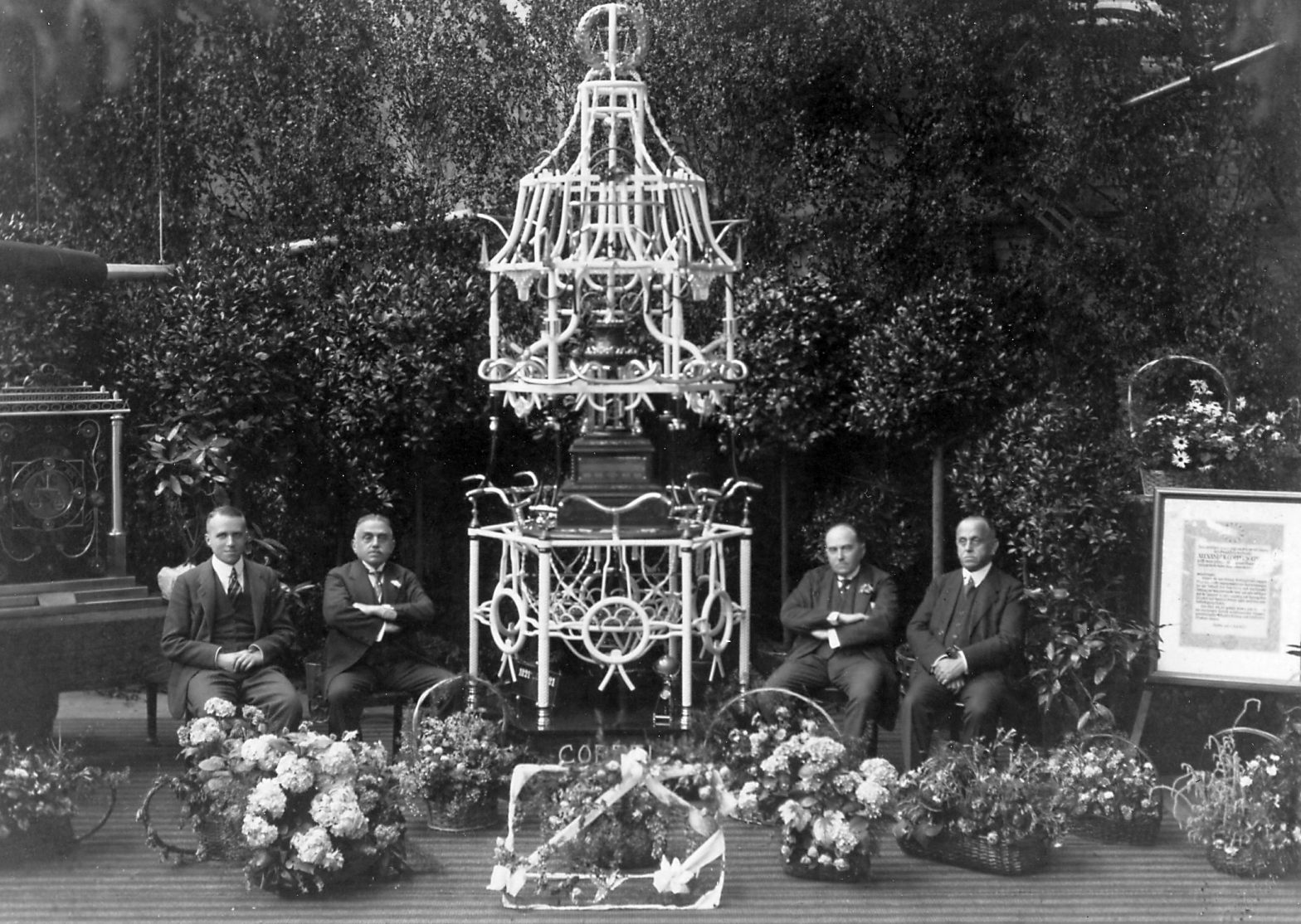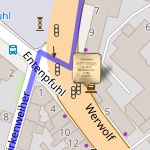Stop 2: The stumbling stone of Dr. Alexander Coppel
Werwolf 3 – go to map – go to starting point
A stumbling stone was laid here at Werwolf in 2007 in memory of Dr Alexander Coppel. It is in front of where his home used to be. The current building was built after the war.
“Stolpersteine”, or “stumbling stones” are a project of artist Gunter Demnig, which he began in 1992. Small memorial plaques laid in the ground are intended to commemorate the fate of people who were persecuted, murdered, deported, expelled or driven to suicide during the National Socialist era. They are usually laid in front of the last freely chosen homes of the victims.
The “Solinger Appell” forum was founded on the occasion of the arson attack in Solingen in 1993. In 2003, it started the support group for the stumbling stones for Solingen (“Unterstützerkreis Stolpersteine für Solingen”). The mayor at that time, Franz Haug, became its patron. In the meantime, more than 120 stumbling stones have been laid in Solingen. Since 2003, historian Armin Schulte has been doing in-depth research into the fates of people persecuted by the Nazis on behalf of the city archive. He has made them known to the public via the city’s website and his book on the stumbling stones and the fate of the people involved ‘Man soll mich nicht vergessen!’ Stolpersteine in Solingen. Schicksale 1933 – 1945.

When Dr Alexander Coppel learned that he was going to be deported to Theresienstadt in July 1942, he wrote this to his great-nephew Karl Anton Reiche:
“I have been assigned to the transport to Theresienstadt in Bohemia which leaves on Monday, the 20th inst. I never foresaw the possibility that I would have to leave, before my death, the place of happiness where my parents had lived since their marriage in 1856 and where I was also born. It is a sanctuary to me. I walk a difficult path, but I know that my God, in whom I trust, will not abandon me. That fortifies me. I have enjoyed a rich and beautiful life. I took pleasure in work and in beauty, and no doubt the good name of our company is still in full force today. I have been something to countless people of good character and importance, I have helped an incalculable number of needy people, and I have always been able to educate and internalize myself on a higher level to this day. This comforts me (…).“
On 21 July 1942, Alexander Coppel was deported to the Theresienstadt ghetto, together with 16 other Jews from Solingen. He survived for only 14 days. He died of hunger and exhaustion on 4 August 1942. Dr Emil Kronenberg, a fellow prisoner from Solingen, reported on his last days:
“In July 1942, Dr Coppel came to Theresienstadt, like all the others without a penny of money, with only the most necessary articles of clothing, and had to sleep there in the attic on the straw. After three weeks, as a result of hunger and exhaustion, he collapsed dead in the morning at the well where he was washing himself. His body was cremated, and the ashes later thrown into the Eger river with those of all the others in a cardboard box.”

